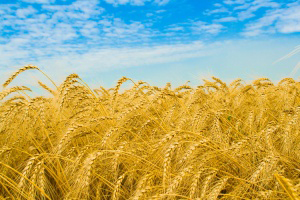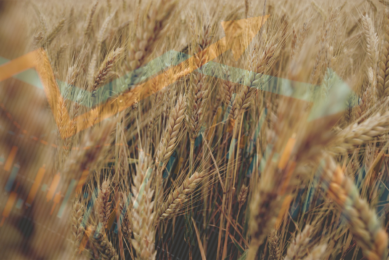Wheat pathogen strains in Europe from Himalayan region

Scientists have found that strains of the wheat pathogen causing severe yellow rust epidemics in Europe have their origin in the centre of diversity in the Himalayan region. This disease can have a great impact on wheat production in Europe, including organic crop production in Denmark.
Wheat is the most widely cultivated food crop in the world. However, the global production of wheat is under constant threat from devastating fungal diseases. The ever more frequent and severe large-scale epidemics caused by these fungi pose a severe threat to global food security.
Scientists are searching for – and finding – answers to how to protect cereal crops against the rust and powdery mildew diseases. A recent discovery is where the invasive strains of the yellow rust fungus have their origin in the Himalayas. This new finding will be presented in a keynote talk at the 14th International Cereal Rusts and Powdery Mildews Conference 2015, held in Helsingør in Denmark July 5-8, 2015.
The conference gathers leading experts in plant diseases from 33 countries from all over the world to discuss the challenges and reduce the risks of disease epidemics and crop losses. Speakers will report about the global landscape of the diseases, innovative control measures and their implications for integrated disease management via increased national, regional and international collaboration.
Tracking the spread and origin of wheat yellow rust
Several factors indicate that the centre of diversity of wheat yellow rust is in the Himalayan region.
“We have good evidence that the new invasion of yellow rust into Europe was spread by rust spores carried by the wind from Asia to Europe, possibly through the northern part of Central Asia. The yellow rust fungus is genetically very diverse in the Himalayas, where it can infect wheat and barley as well as common barberry, the sexual host of the fungus,” says Sajid Ali, a visiting scientist at the Department of Agroecology in Aarhus University and scientist at the University of Agriculture, Peshawar, Pakistan.
A team of scientists led by Aarhus University mapped the migration patterns, centre of diversity and population structure of this aggressive fungus using microsatellite genotyping of worldwide representative samples. There is a high genetic diversity of the fungus causing wheat yellow rust, Puccinia striiformis, in the Himalayan and near-Himalayan regions, i.e. Nepal, Pakistan and China, and a much lower genetic diversity in other parts of the world.
In addition, the region contains the alternate host of several rust fungi, i.e. barberry. This plant species provides the fungi with a place to “hang out” in the absence of wheat and provides a potential for sexual reproduction.
“The invasive stains were already detected the first year they appeared in Europe using innovative diagnostic and information technology tools, which enabled an early alarm and preparedness to face the challenges,” says Ali.
Combating of rust diseases, resistant crop varieties are a good tool
The combat of rust diseases, which have long-distance dispersal capacities, requires collaboration on a global scale and rapid sharing of information among world-leading researchers, plant breeders and extension workers.
“The early detection and responses was only possible due to long-term collaboration between Aarhus University in Denmark, the National Agricultural Research Institute (INRA) in France, the Julius Kühn Institute in Germany, the National Institute for Agricultural Botany in the United Kingdom, the International Wheat and Maize Improvement Centre Mexico, the International Centre of Agricultural Research in the Dry Areas, and the University of Agriculture, Peshawar, Pakistan.” emphasizes Professor Mogens Støvring Hovmøller from the Department of Agroecology at Aarhus University, where he leads the Global Rust Reference Centre.
At the conference scientists from all over the world are meeting to discuss the challenges and solutions involved in fighting disease epidemics in wheat and barley. The main emphasis will be on the recent discovery of the global spread of yellow rust from its centre of diversity in the Himalayas. The new strains have increased the risks of disease epidemics, in particular for organic farmers who do not have access to pesticides.
“Our goal is to keep the disease at a level that keeps crop losses at a minimum while protecting the environment with a justified use of pesticides. The most economical and environmentally friendly solution is to escalate the development of new crop varieties that are resistant to a wide array of plant pathogens,” says Mogens Støvring Hovmøller and continues:.
“When breeding for resistant varieties, plant breeders must consider pathogen diversity beyond national scales. This requires intensified collaboration between plant breeders and plant pathologists, which is one of the aims of the conference. There is a need for both innovative, durable disease resistance genes ad smart strategies for the deployment of resistant crop varieties.”
The 14th International Cereal Rusts and Powdery Mildews Conference 2015 is organized by the Global Rust Reference Centre at Aarhus University and supported by the European and Mediterranean Cereal Rusts Foundation.
Source: Janne Hansen, Aarhus University.











